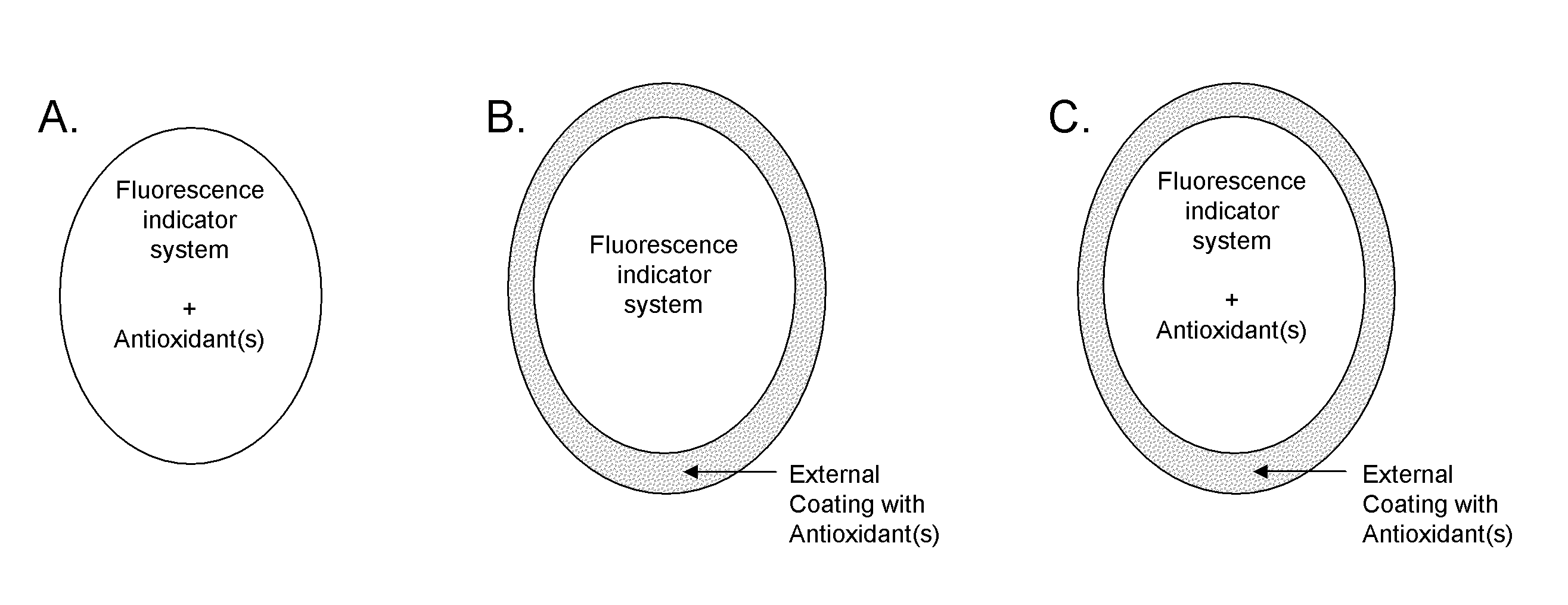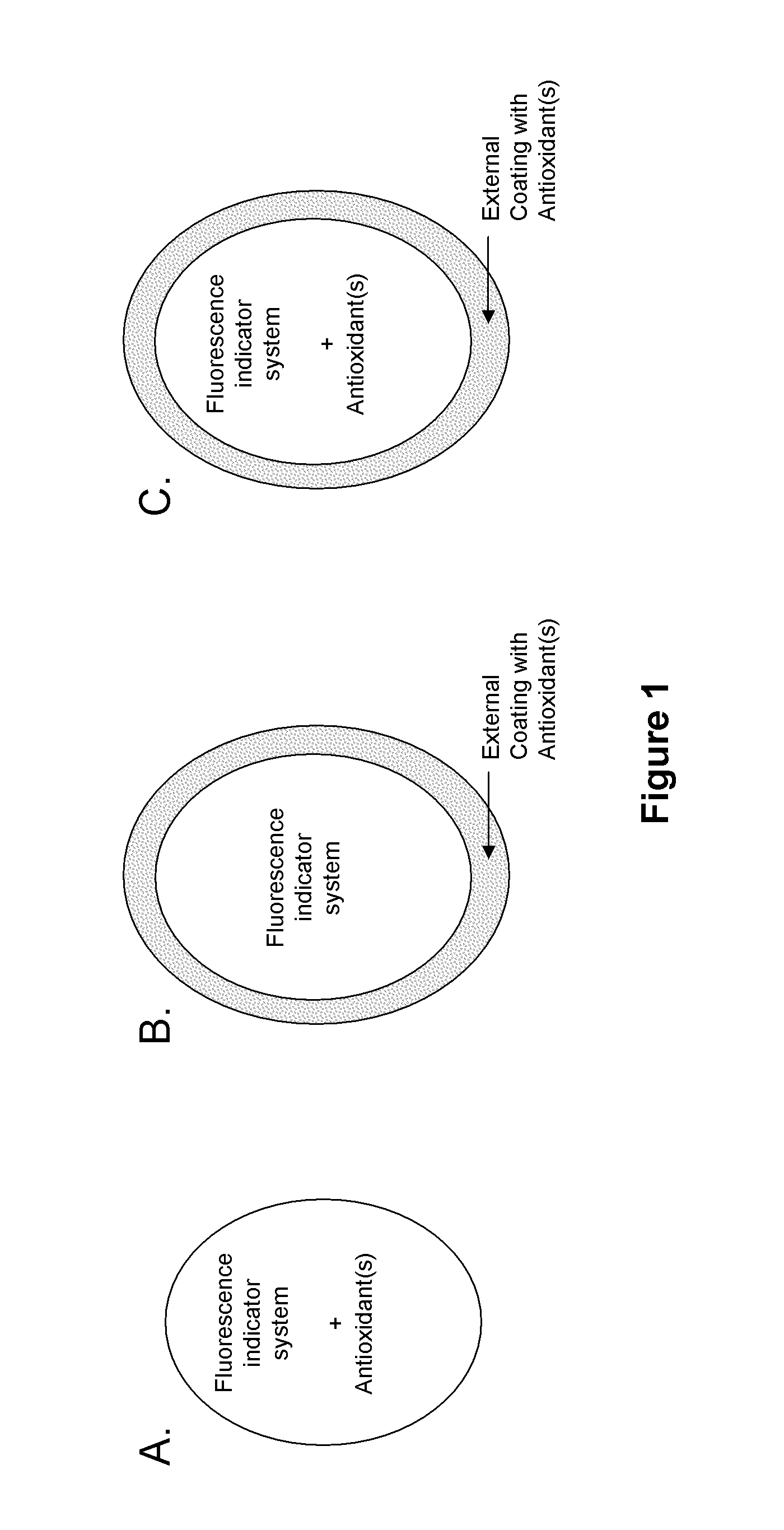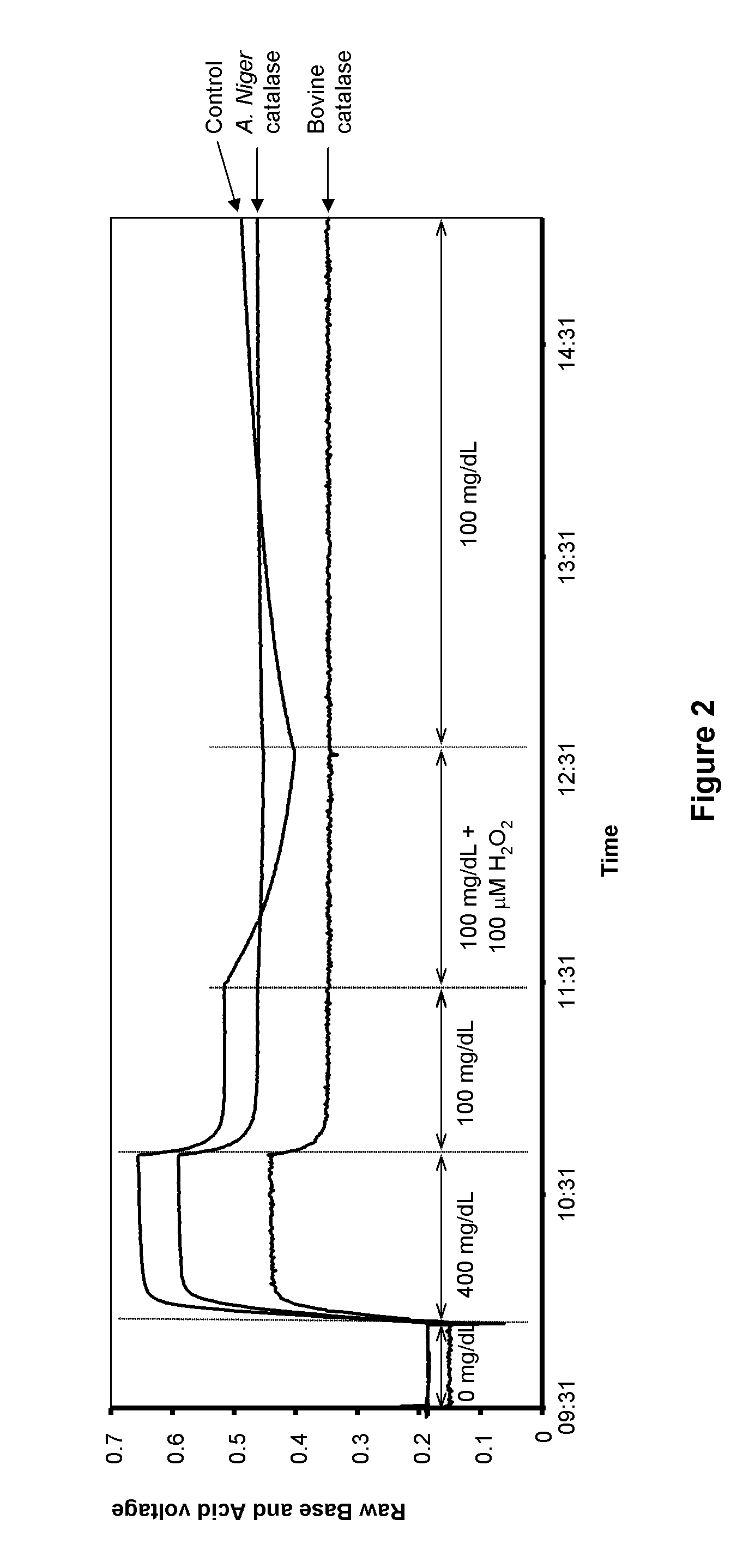Antioxidant protection of a chemical sensor
a technology of chemical sensors and antioxidants, applied in the field of analyte sensors, can solve the problems of not showing or suggesting that metals and their oxides can be used to protect fluorescence-based sensors
- Summary
- Abstract
- Description
- Claims
- Application Information
AI Technical Summary
Benefits of technology
Problems solved by technology
Method used
Image
Examples
example 1
Sensor Containing Fluorescence Indicator System and Antioxidant
[0109]A hydrogel is prepared to which an equilibrium fluorescence indicator system and one or more antioxidant is covalently bonded. The hydrogel is formed by free radical copolymerization of a mixture of hydrophilic monomers and crosslinker in the presence of the equilibrium fluorescence indicator system. The sensing hydrogel is transferred to a fresh solution of PBS and the fluorescence intensity of the equilibrium fluorescence indicator system is monitored over time. The PBS solution is replaced with an analyte solution in pH 7.4 PBS and a fluorescence increase is monitored. The analyte solution is spiked with a reactive oxygen species and the sensor is allowed to be in contact with the reactive oxygen species. The reactive oxygen species solution is replaced with a fresh analyte solution and the fluorescence intensity monitored over time.
example 2
Interpenetrating Polymer Network (IPN)
[0110]A hydrated sensor containing an equilibrium fluorescence indicator system polymerized in a hydrogel is immersed in a monomer solution (130 μL) containing DMAA, (10% v / v), N,N′-methylenebisacrylamide (2% w / w of DMAA), one or more antioxidants, ammonium persulfate (0.3%), and PBS (90% v / v, 20 mM, pH 7.0). After 2 h, TEMED (50 μL, 10% in pH 7.0 PBS) is added and the mixture is allowed to polymerize over 2 h at room temperature. The sensor is withdrawn from the bulk hydrogel polymer and leached in pH 7.4 PBS for 15 h. The sensor is transferred to a fresh solution of PBS and its fluorescence intensity is monitored over time at 37° C. The PBS solution is replaced with an analyte solution in pH 7.4 PBS and the fluorescence increase is monitored. The analyte solution is spiked with a reactive oxygen species and the sensor is allowed to be in contact with the reactive oxygen species. The reactive oxygen species solution is replaced with a fresh ana...
example 3
[0111]IPN Containing TriCysMA and 3,3′-oBBV with External Coating Containing Catalase
[0112]A hydrated sensor containing polymerized TriCysMA and 3,3′-oBBV was immersed in a monomer solution (130 μL) containing DMAA, (10% v / v), N,N′-methylenebisacrylamide (2% w / w of DMAA), bovine catalase (0.3%, activity=14000 U / mg protein) or Aspergillus niger catalase (0.3%, activity=20,000 U / mg protein), ammonium persulfate (0.3%), and PBS (90% v / v, 20 mM, pH 7.0)After 2 h, TEMED (50 μL, 10% in pH 7.0 PBS) was added and the mixture was allowed to polymerize over 2 h at room temperature. The sensor was withdrawn from the bulk hydrogel polymer and leached in pH 7.4 PBS for 15 h. The sensor was transferred to a fresh solution of PBS and its fluorescence intensity was monitored over time. The PBS solution was replaced with a 400 mg / dL glucose solution in pH 7.4 PBS and the fluorescence increase was monitored. The glucose solution was replaced with a different concentration glucose solution (100 mg / dL)...
PUM
| Property | Measurement | Unit |
|---|---|---|
| emission wavelengths | aaaaa | aaaaa |
| emission wavelengths | aaaaa | aaaaa |
| excitation and emission wavelengths | aaaaa | aaaaa |
Abstract
Description
Claims
Application Information
 Login to View More
Login to View More - R&D
- Intellectual Property
- Life Sciences
- Materials
- Tech Scout
- Unparalleled Data Quality
- Higher Quality Content
- 60% Fewer Hallucinations
Browse by: Latest US Patents, China's latest patents, Technical Efficacy Thesaurus, Application Domain, Technology Topic, Popular Technical Reports.
© 2025 PatSnap. All rights reserved.Legal|Privacy policy|Modern Slavery Act Transparency Statement|Sitemap|About US| Contact US: help@patsnap.com



